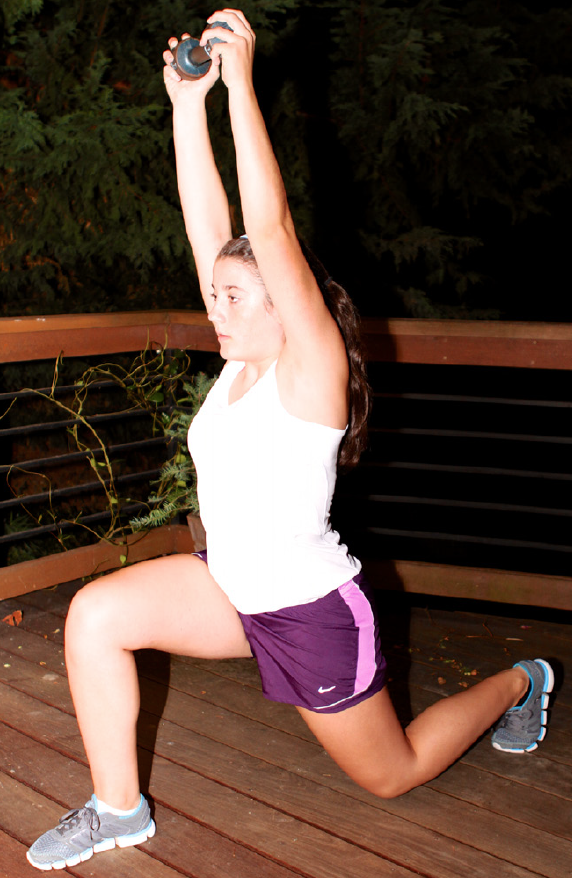By Damon Leedale-Brown, Sports Scientist & Conditioning Specialist
A topic raising regular concerns and uncertainties for parents of young athletes is weight training. I am often approached by parents with questions or statements along the lines of: ‘I think my child needs to get stronger but have heard that strength training can be dangerous’; ‘Other parents have told me that lifting weights can damage my child’s growth’; ‘Is it true that they should not start strength training until they are at least 16?’; ‘What programs or exercises should they follow to get stronger?’
 Any misperceptions around strength training for youngsters are generally untrue. Youth strength training, as with pretty much any physical activity, does carry some degree of inherent risk of musculoskeletal injury, yet this risk is no greater and often much lower than in many sports in which young athletes regularly participate. Research over the past 20 years has clearly shown that strength training is a safe and effective training modality for young athletes, assuming certain guidelines are followed and expert instruction is provided, especially in the early stages of learning. Because muscular strength and power are key factors to success in many sports—and an important part of a successful squash players athletic profile—it is therefore likely that those young athletes who follow a safe, structured and progressive strength training program will perform better than those who do not strength train. In addition, strength training during childhood can provide the foundation for significant gains in strength and power during the late teens and early adult years.
Any misperceptions around strength training for youngsters are generally untrue. Youth strength training, as with pretty much any physical activity, does carry some degree of inherent risk of musculoskeletal injury, yet this risk is no greater and often much lower than in many sports in which young athletes regularly participate. Research over the past 20 years has clearly shown that strength training is a safe and effective training modality for young athletes, assuming certain guidelines are followed and expert instruction is provided, especially in the early stages of learning. Because muscular strength and power are key factors to success in many sports—and an important part of a successful squash players athletic profile—it is therefore likely that those young athletes who follow a safe, structured and progressive strength training program will perform better than those who do not strength train. In addition, strength training during childhood can provide the foundation for significant gains in strength and power during the late teens and early adult years.
Reducing injury risk by strength training is even more important to the developing young athlete. Young athletes should have good overall strength and muscular balance relative to their age and maturation before engaging in competitive sports that place excessive stress on an otherwise unconditioned and underprepared musculoskeletal system. (As discussed in a recent article, many young athletes in this country get injured, often drop out of their childhood sports at a young age through failure, frustration and burnout—largely because of the trend toward early sport-specific specialization rather than developing well-rounded athletic skills).
Consider the movement demands and stresses placed upon a young athlete’s body on a squash court—the challenge for many players comes in the slowing and controlling (deceleration) phase of movement as they approach the ball, particularly in the front corners of the court, and when under higher levels of movement pressure. It is common to see young players collapsing into shots because they lack the strength and mobility to get into strong and balanced body positions, and cannot generate force quickly enough to control (or resist) their forward momentum onto the ball. Chronic and Acute injuries on the squash court typically occur in these deceleration phases of movement. Too many junior players have had fairly serious injuries including: major tears of hamstring, adductor and hip flexor muscles; lower back problems such as bulging or herniated discs and stress fractures; and chronic tendonitis issues with the knee. While having good levels of strength and mobility cannot guarantee against injury, it definitely goes a long way to reduce the potential.
Some parents, on hearing the words ‘strength training’, have visions of their young son or daughter in the gym collapsing un- der the load of a huge weight they have been asked to lift! If the strength program is being supervised and delivered by a qualified strength & conditioning specialist, who has experience in training and developing young athletes, this vision should never become a reality. At some point resistance in the form of free weights (barbells and dumbbells) will be required, but the initial focus of any strength program with young athletes should always be on the development and understanding of excellent technique across a range of different exercises. Strength training forms a significant part of the conditioning program that I deliver to the young squash players who train with me. For many players, body weight alone is sufficient challenge in the initial phases of development, and I never let players sacrifice technique for increases in resistance when clear that they are not yet ready for this progression. When ready to progress, we use a range of medicine balls, weight plates, light bars and dumbbells—all of which are on site at the squash courts. It is vital to structure training sessions that provide great all-round balance of general physical preparation (particularly in areas of strength, mobility and movement), alongside development of sport-specific skills in training sessions of young players.
Next month: More detail on the specifics of designing a well- balanced strength program for young athletes with consideration given to factors such as: age to start; exercises to include; how much should they do, etc.





